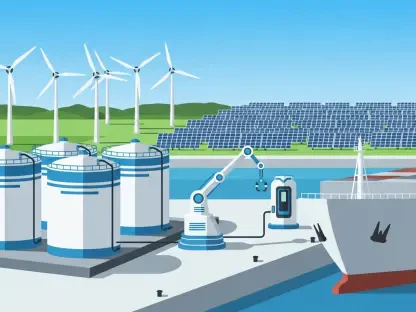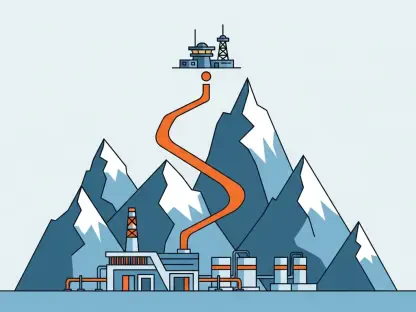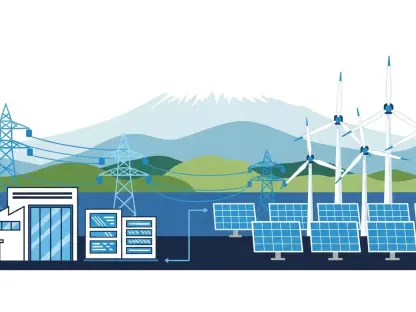The ambitious plan to expand the underground power station known as “Hollow Mountain” in Ben Cruachan, Scotland, highlights an intriguing confluence of innovation and economic caution. Drax, a prominent renewables developer, initially proposed a £500 million investment to construct a 600MW hydroelectric facility adjacent to its existing complex. However, rising costs have caused the developer to reassess this plan and temporarily halt seeking UK government support. While the expansion remains a potential future venture, its realization depends on favorable risk and return dynamics. Originally inaugurated in 1965, the current station was a trailblazer in reversible turbine storage energy projects, putting into perspective the scale and complications of such endeavors.
Overview of the Energy Sector and Industry Context
The energy sector is undergoing significant transformations dominated by the shift toward sustainable solutions. This industry encompasses various segments such as oil and gas, nuclear power, and renewable energy sources. Technological advancements play a pivotal role in shaping its course, with companies striving for operational efficiency and reduced environmental impact. Prominent players in the market, like Drax, continue influencing trends and regulatory policies essential for achieving cleaner energy. Compliance with laws governing emissions, sustainability standards, and economic factors also guides industry dynamics, amplifying the importance of adherence to regulations in the sector.
Current Trends and Market Dynamics
Key Industry Trends
Consumer demand for sustainable energy and innovative technologies is altering the landscape of the industry. Renewable energy sources are gaining traction as a feasible alternative, driven by the need to address climate change and resource depletion. As a result, market dynamics are shifting, emphasizing the adoption of smart grids and energy storage solutions. Companies are exploring diverse opportunities to meet changing consumer preferences, with initiatives focusing on integrating digital technologies into operations and enhancing efficiency.
Market Performance and Growth Projections
The energy market’s performance reveals an upward trajectory alongside global shifts toward renewable sources. Growth projections indicate promising potential in solar, wind, and hydroelectric sectors, fueled by technological advancements and increasing environmental awareness. Forecasts predict continued investment in infrastructure and innovation as companies aim to reduce carbon footprints and capitalize on emerging opportunities. Data highlights an optimistic outlook for industry expansion, foreseeing further development and diversification of energy solutions.
Challenges Facing the Energy Sector
The energy industry faces various challenges as it transitions to sustainable models. Technological obstacles include energy storage limitations and costs associated with renewable infrastructure. Regulatory complexities, such as changing emissions standards and environmental regulations, pose further hurdles for industry growth. Market-driven issues, including fluctuating resource demand and price volatility, add another layer of difficulty. Companies like Drax emphasize disciplined investment strategies to balance capital expenditure with potential returns, aiming to streamline operations and mitigate risks within economic constraints.
Regulatory Landscape and Industry Impact
Regulations profoundly influence industry practices, defining the parameters within which companies operate. Compliance with international mandates and local policies guides energy production, distribution, and consumption. Laws focused on reducing emissions and enhancing resource efficiency affect strategic initiatives and technological implementations across the sector. Security measures remain pertinent, safeguarding infrastructure against cyber threats and ensuring reliable service delivery. These regulatory changes shape industry standards, dictating how energy providers respond to evolving requirements.
Future Prospects of the Energy Industry
The industry is poised for transformative advances, driven by technological innovations and shifting consumer expectations. Emerging technologies like artificial intelligence and blockchain present potential disruptors in energy management and supply chain efficiency. Consumer preferences lean toward cleaner and decentralized energy solutions, prompting companies to explore smart grid integration and enhanced storage methods. Global economic conditions will continue to impact development trajectories, offering new opportunities and pathways for growth.
Conclusion and Recommendations
In summary, the expansion of Cruachan’s power station presents both opportunities and economic challenges, reflecting broader industry trends. Companies must assess risk and return dynamics carefully as they navigate rising costs and evolving technologies. Forward-looking strategies should incorporate balanced capital expenditure and remain adaptable to regulatory changes. The future of the energy industry hinges on successful embracement of innovation and sustainable practices, paving the way for growth and enhanced energy solutions. Visionary planning and investment in new technologies will be essential to meet ongoing demand and achieve long-term objectives in a constantly evolving market landscape.









